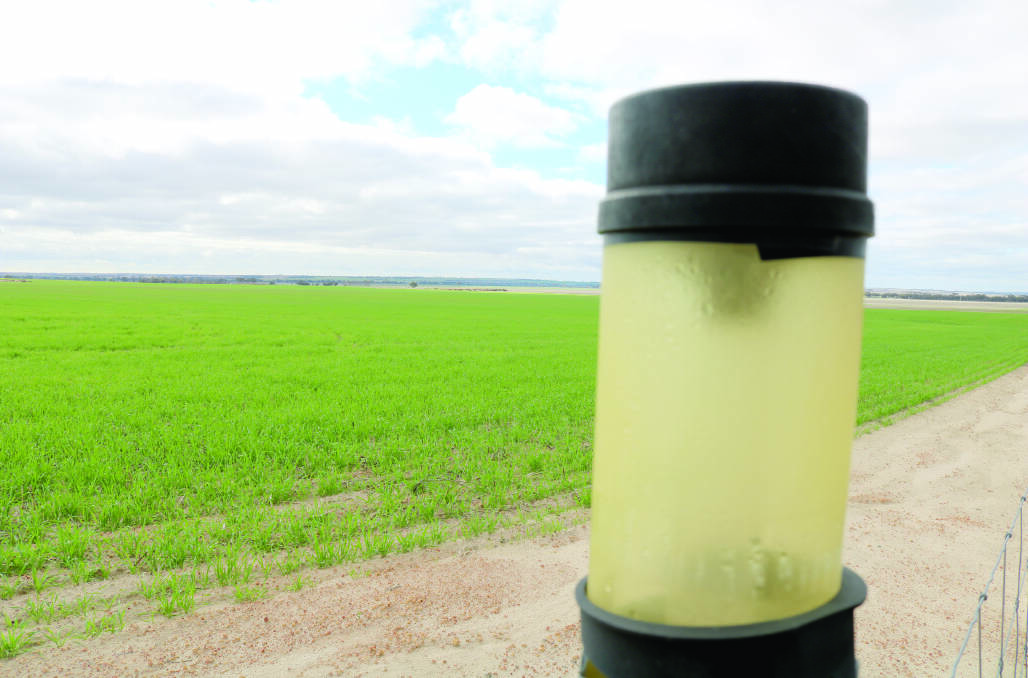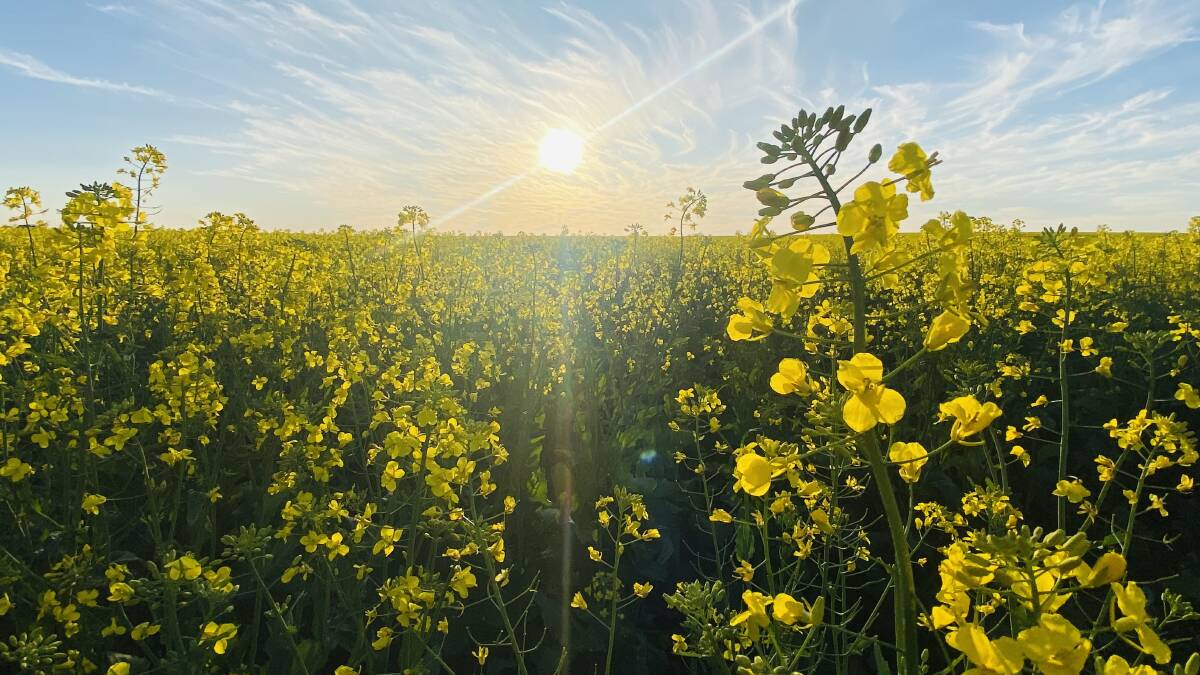
RAINFALL across WA's graingrowing regions last week was as mixed as the season that is unfolding.
Subscribe now for unlimited access to all our agricultural news
across the nation
or signup to continue reading
For some properties a good fall was the icing on the cake for what is shaping up to be another reasonable season.
There are even some areas that could potentially have a better overall season than last year's record-breaking crop.
Unfortunately for others however, the rain was of little consequence or it was too late, with minimal germination or crops that have already turned because of warm and dry conditions, highlighting the fickle nature of farming, particularly in some of the northern areas.
The nine millimetres received across the Wyalkatchem region last Wednesday afternoon and evening was described as "pretty awesome" by Bernie Quade, agronomist at Quade AgriServices - Nutrien Ag Solutions, Wyalkatchem.
"Most people got around that mark - there were some people who got a little bit more and some who got a little bit less, but 9mm was an average number," Mr Quade said.
He said the storm cell was timely with all crops running out of moisture and were filling grain from what they had in the soil.
"The grain fill will be so much better across every single crop type and paddock, it has benefitted everything," Mr Quade said.
"Further north it is too late for some paddocks, whereas in our part of the world, we would have taken more rain, but it is better than getting no rain at all."
He said the rainfall "was massive" in terms of what it meant for the crops.
"This time of the year, as everyone knows, the water use efficiency out of a rainfall event is quite big when trying to fill grain," he said.
The Wyalkatchem area is still well below its annual average rainfall and some crops, like barley and canola, will finish on that rain.

"But there is still a fair bit of time for wheat, we have still got two to three weeks to benefit from more rain on that," Mr Quade said.
Any more rain will have a positive result for wheat production.
He conceded there were areas to the north that were struggling and "we are fortunate that we are the right side of that line, 70 kilometres north of Wylie, where it does get pretty ordinary".
Mr Quade said it was a big relief for many farmers, who a week earlier were thinking their crops were going to finish without any more rain.
"We stood there in the shed yesterday afternoon listening to it come down with one bloke and there were big smiles," he said last week.
Mr Quade said the grain quality was going to be much better now, "there is no doubt about that".
"It means a bit price wise and for yield too," he said.
Clients of Elders, Geraldton, agronomist Peter Elliot-Lockhart, were hoping for at least 10mm from last week's rain, which unfortunately for most, was not the case.
Even where he lives, 20km from Geraldton, towards Yuna, only 6.5mm filled the gauge.
He said some farmers to the east only received 3-4mm which was nowhere enough to resurrect what is already a testing season in the Mid West.
When Mr Elliot-Lockhart spoke to Farm Weekly last week, he was looking at crops on heavy, grey clay on flat land near Bookara, south of Geraldton, saying they were "well and truly on the turn", and he suggested they could be harvested within the month.
He said those crops weren't going to benefit too much from the latest rain, but canola in that area would.
"The canola is still fairly green and I think the rain will help fill the grain out a bit more," Mr Elliot-Lockhart said.
Some of the oaten hay he inspected late last week was definitely ready to be cut.
"I think it was losing leaf area before this rain, so it probably should have been cut a little bit earlier," he said.
When looking at the wheat across his region, Mr Elliot-Lockhart said 10-15mm of rain last week would have alleviated some of the screening issues farmers were likely to experience when delivering at harvest, with the grain size being too small.
"If we can get a little bit of moisture and fill the grain out a bit better, hopefully it will mean we are not grading for screenings," he said.
Up to 15mm also had the potential for some crops gaining up to half a tonne per hectare, which Mr Elliot-Lockhart said would push tonnages closer to average, rather than below-average.
As for the soil profile prior to last week, he said it was minimal and that, "we pretty much used the bucket", with most crops struggling to finish from what little moisture there was.
Most of the lupins he had inspected hadn't lost their leaves yet and would benefit from the rain, but it was probably too late for anything planted on light land or was shallow.
He said the rain was too late for most crops around Ajana and north east of Mullewa.
"As you get closer to the coast, probably the line is south of Ogilvie, somewhere through there, just south of Yuna, stretching out to probably Mullewa, it depends on where the strips of rain went out..it gets patchy," Mr Elliot-Lockhart said.
With most properties around Katanning receiving 10-20mm, the season could be above average according to Frank Boetel, agronomist, ConsultAg, Katanning.
He said with more rain likely in the area over the next week, and maybe towards the end of September, there was plenty of upside and most farmers have been "very fortunate".
In some cases it has been too wet for spraying programs which they have delayed because the crops are not that advanced.
"They are probably where I would prefer them on the frost perspective," Mr Boetel said.
When comparing crop development to last year, they are about two to three weeks behind.
"They bang on about how warm it's meant to be, but I reckon it's been the coldest winter here for 23 years that I have been here," Mr Boetel said, describing it as "bitterly cold".
After good rain in April, he said there was a dry patch and they were fortunate to have follow up rain at the right time.
Mr Boetel said some of the crops at that point would have died if they didn't receive the timely rain.
Since then he said they have had consistent rainfall.
Mr Boetel has clients from Gairdner, Katanning, Nyabing, Dumbleyung and over to West Arthur and Darkan - and said areas west of that line have been very good.
He said there were some outstanding which he put down to those areas being a bit drier, with these crops "looking very robust".
There has been periodic water logging but it didn't get as wet as last year.
"As an overview, we will definitely be above average," Mr Boetel said.
He said farmers were waiting for crops to dry out a bit so they could apply the last of their fungicides and insecticides.
"We have had a pretty good year for fungal disease but we are just putting it on so we still maintain our green leaf index in case it does get a bit tight at the end," Mr Boetel said.
He said cereal aphids were just starting to appear, but the cold weather had limited their numbers.
There was a lot more wind than rain for Peter Terrell who farms 65 kilometres west of Esperance.
"I think the 6mm that we got, probably only made up for the evaporation from the wind," Mr Terrell said.
He said the wind speed reached 98 kilometres per hour and the 6mm was consistent across the whole property.
The wheat didn't suffer from wind damage, but the same couldn't be said for the canola.
"The more advanced the canola, the more flower that got blown off it," Mr Terrell said.
"Some of our later-to-get going canola crops retained most of their flower."
When looking at the crop outlook for the season, Mr Terrell said, on average, they were a little bit better than last year.
"On average our crops are most consistent," he said.
This year they started seeding a little bit earlier but suffered from a dry autumn with only 80mm of rain until the end of May.
This was followed up by 156mm rain in June which has more than topped up the soil profile.
This saw severe waterlogging in canola which germinated one week and was drowned the following week.
"It wasn't until the last bit of August that we managed to get them to come with any kind of vigour," Mr Terrell said.
Because the canola germination was not timely, it is behind schedule but he said the wheat was looking good.
Mr Terrell said they weren't desperate for last week's rain but acknowledged there were other parts of WA that were.
"If we got rain at the end of September that would do us," he said.
"The south coast generally is looking pretty good, anything north of Highway 1 is pretty much good."
When he was talking to Farm Weekly, Mr Terrell was driving to Jerramungup and said it was looking good for most of the journey, but said there were some properties on the south side of the road that had suffered from too much rain.


